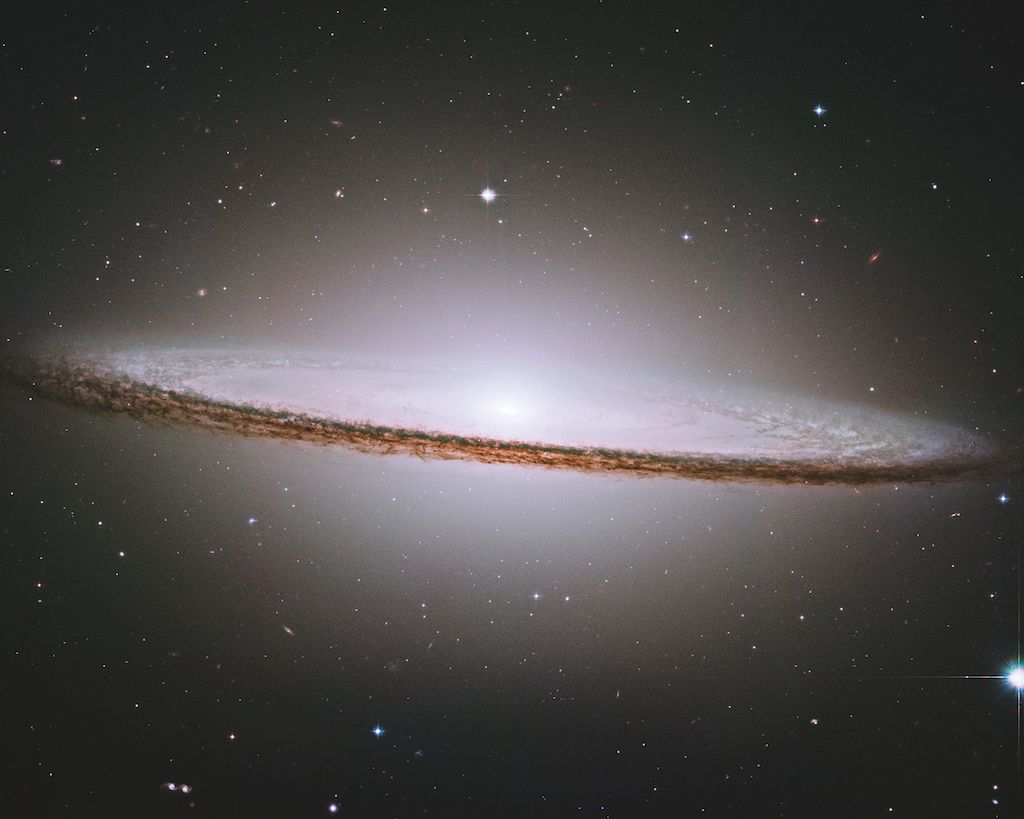
Since the first astronomical photo was taken of the moon in 1840, technology has advanced to allow scientists to snap the clearest and most accurate cosmic images.
For example, by observing space using only visible light, astronomers would be unable to identify the high-energy features within the universe such as black holes.
When observing space images using infrared telescopes, the longer wavelengths detected can travel more effectively through dustier parts of space.
Infrared radiation can be emitted by material that isn't bright enough to view using visible light, and shows the viewer regions that were previously invisible. .
Here, we explain how some of our favorite space images were taken.In the closest-ever encounter with Pluto, about 7,800 miles (12,500 kilometers) above the surface, NASA's New Horizons spacecraft captured this image of the orb on July 14, 2015.The image, which consists of visible and infrared images taken by the Ralph-MVIC (Multispectral Visible Imaging Camera), displays a detailed view of 1,100 miles (1,800 kilometers) of terrain. .
But in this photograph, taken by the Hubble Space Telescope's Wide Field Camera 3, they come together in a striking panoramic assortment of reds, oranges and blues.
Two filters detected ultraviolet wavelengths (F225W and F336W) while the third studied the infrared (F814W).
The blues and greens are a result of the ultraviolet filters, while the red hue was given to infrared filters.
Using its strong winds of radiation, the star, which is between 10 and 20 times the mass of our sun, blows the surrounding clouds of space dust outward around it.
The image was taken by Hubble's Wield Field Camera 3; different visible light filters isolated the specific wavelengths linked to different elements.NASA's Spitzer Space Telescope contributed the infrared data forming the majority of the red, while visible data from the Hubble Space Telescope captured the blues and greens.
NASA's Chandra X-ray Observatory imagery, shown in purple, combines with optical imagery from the Hubble Space Telescope, shown as the red and blue areas, to create a delightfully detailed depiction of this stellar swirl.
This intricate disc was pieced together using six observations from the Hubble telescopeThis makes it the most detailed image of the Sombrero galaxy captured in visible light
This photograph, which was taken by the Hubble Space Telescope, shows space matter 6,500 light-years away from Earth
Aboard the Hubble telescope, WFPC2 was the size of a grand piano
Each of its cameras used four filters and captured two images from a different part of the pillars.
Using an updated Hubble camera, the Wide Field Camera 3, filters were used to show glowing oxygen, hydrogen and sulfur in a clearer image
Using infrared wavelengths that were able to travel farther through the dense gas and dust, astronomers were able to observe the nebula in greater detail
